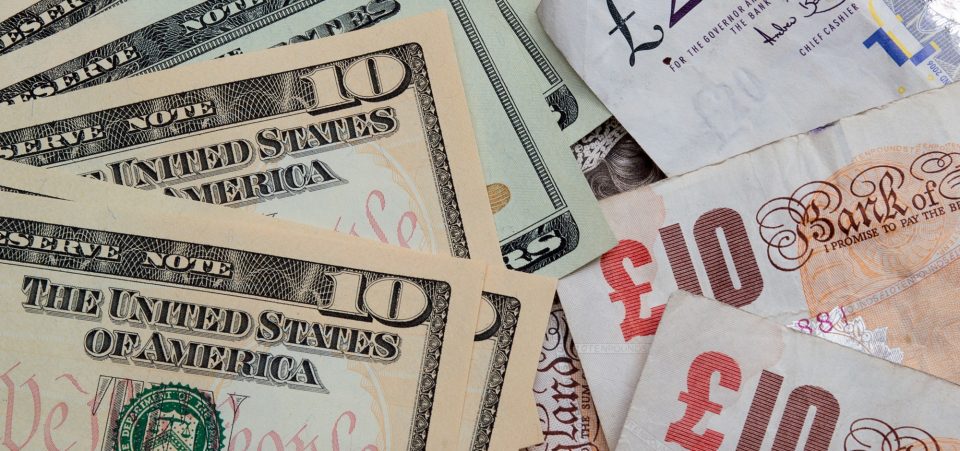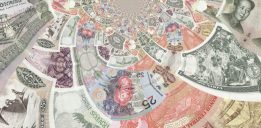GBP to USD Forecast Is Gloomy; Recent Surge Won’t Last
Last week, British Prime Minister Theresa May enthusiastically endorsed Brexit in a fiery speech. She announced her government’s intention to accelerate the course of Brexit, with Churchillian overtones of healthy nationalism. The British pound forecast turned patriotic. The GBP to USD exchange rate rebounded three percent.
It was the pound’s fifth-strongest single-day performance since the 1980s. The GBP to USD made a strong move. May’s speech brimmed with optimism. It was enough to turn Angela Merkel into a eurosceptic. In fact, the pound sterling’s bullish jump proved short of the mark. Most of all, it could simply set the British pound forecast for a fall.
The GBP to USD forecast moved simply on the effectiveness of May’s speech. That’s the problem; there was no fundamental economic, financial, or political foundation for the pound’s rise. Indeed, until the day before (January 16, 2017), the prevailing relationship between the course of the pound and the Brexit was inverse.
The more significant the steps toward pulling Britain out of the European Union (EU), the more the pound depreciated. Any realistic assessment of the British currency’s course cannot ignore this fact. The British pound and Brexit have not suddenly engaged in a direct relationship.
Speculators Will Exploit the Hubris around Sterling
In no time, the rest of the world—and no doubt George Soros-type financiers—will take advantage of Ms. May’s “Union Jackery” hubris, or United Kingdom Independence Party (UKIP) moment. As a reminder, UKIP led the Brexit movement.
If you were to read some British media, you might make the mistake of falling for the “rule Britannia” fervor. Only a coronation would prompt more flag waving. But the fact is that the GBP to USD exchange rate has dropped considerably since Brexit.
An analysis of the pound’s trend from 2015, when Brexit chances were still deemed low, until now highlights the pound sterling’s risk. In a period of less than two years, the GBP to USD has lost about 20%. The pound has also lost 15% against the euro. There can be no doubt that the pound has suffered the effects of Brexit.
But Brexit is not a sudden phenomenon. The U.K. is still in the EU at present. The full effects will not occur until the final chord to Brussels is cut. Her Majesty’s loyal subjects might be in for an ugly surprise. No matter how enthusiastic May’s words might be, they have not lifted any of the gray clouds hanging over London’s financial hub, known as “The City,” and the British car industry.
The City pays some £66.0 billion in taxes to the U.K. (Source: “Hard Brexit could cost £66bn a year,” The Times, October 11, 2016).
As for the British car industry, Brexit means that such U.K.-based manufacturers as Toyota Motor Corp and Nissan Motor Co Ltd—or Ford Motor Company and Jaguar, for that matter—will likely face import duties in the rest of the EU.
Despite May’s speech, Britain and her pound face a less-than-thrilling prospect. The U.K. has already had to swallow the difficult fact of dropping below India—its former colony—in economic output. It’s even behind France. But that was the situation before Brexit.
U.K. Will Face More Economic Obstacles
When it leaves the EU, Britain will have walked away from a large slice of its export market pie. It’s unclear as to where London can start finding suitable replacements to fill that pie again. Indeed, there aren’t too many places where the U.K. isn’t present. It does business in every continent.
It’s just that the EU accounts for so much of Britain’s trade. That’s the problem. Sure, Australia signing a free trade pact with the U.K. helps, but Australia’s economy replaces a mid-size EU economy at best in export potential. “Put another Jaguar on the barbie” isn’t going to become a slogan in Melbourne any time soon.
It’s difficult to fault Theresa May. She inherited the prime minister’s office from her pro-EU predecessor David Cameron. She is merely trying to make the best of a situation which, upon analysis, has little going for it.
Particularly when it comes to the British economy, the world tends to measure the country’s economic health according to the value of the pound. The British PM put her best face on Brexit, but it will be hard to transfer the optimism to the rest of the body. Judging by the GBP to USD post-Brexit collapse, the British economy is worth 20% less now.
The question is, therefore, why did the British currency make such a leap on January 17? Before May’s speech at Lancaster House, the pound was trading at $1.20. Shortly after, it jumped 2.7% to $1.23. There is little to doubt that the inverse correlation between the GBP to USD exchange forecast and Brexit remains.
The recent—and sharp—movements on the pound might be attributable to profit taking. Many scrambled to close short positions, based on the pound’s dismal performance on January 16. In other words, May’s efforts to paint the post-Brexit future as one of a global Britain likely had nothing to do with Sterling’s rebound.
Brexit will also be faster than expected. That’s why pundits have dubbed it a “hard Brexit.” Perhaps this effort to shed uncertainty, almost a sense of relief, prompted the GBP to USD to rise. Hard Brexit is the equivalent of removing a “Band-Aid.” Rather than a slow agony, those in charge have chosen to pull it off quickly.
Thus, there is nothing structural about the pound’s recent recovery. Then there’s Donald Trump, who has been installed as president of the United States. The U.S. dollar has appreciated in expectation of the inflationary pressure from Trump’s proposed stimulus, as well as the U.S. Federal Reserve’s interest rate hike program.
Trump’s Presidency Adds Its Own Uncertainty to GBP to USD Forecast
Many Washington establishment insiders have decided they would not even attend Trump’s inauguration ceremony on January 20. Instead, hundreds of thousands of marchers protested in the U.S. capital over the weekend. That’s just a hint of the tensions that have been brewing in the Washington D.C.
Thus, the pound’s recovery is also partly due to a weaker dollar. Trump’s tweets are a bit of a liability. That risk gets transferred to the dollar. But that doesn’t mean that a long-term bullish outlook for the pound holds water. It leaks it, and the GBP’s value remains bearish.
As for the drop of the FTSE 100 index, there is an inverse correlation with the pound. This is because the companies in the FTSE 100 collect revenue in dollars. So, if the pound depreciates (or appreciates) by say, 10%, revenues of these companies will be roughly 10% higher (or lower) in local currency.
The other reason that the pound’s rebound will not last is that the U.K. Parliament has not had its voice on the hard Brexit line proposed by Theresa May. British MPs still have their chance to challenge May. Expect further tensions in the first half of 2017. It’s too soon yet to get clarity on how the Brexit process will unfold. Thus, volatility remains.
The unclear Brexit path leaves uncertainties in the medium to long term for the pound sterling. Analysts and investors will therefore remain disoriented. Yet, the picture cannot be rosy. It’s really a matter of how bad the effect could be. There are no margins for appreciation.
The fact that the U.K. will have to confront an inevitable impact from a resizing and re-orientation of trade—losing its biggest export market—will affect growth. How the U.K. will respond is unclear, but to stimulate growth and remain competitive, the Bank of England will have to maintain low interest rates, putting pressure on the pound.
If Trump’s growth works, meanwhile, the Fed will raise its interest rates and push the dollar higher. Thus, the GBP to USD will remain in favor of the Greenback. Indeed, nobody knows just how much Brexit could cost. It could reduce the pound to the currency of an emerging market by the time all is said and done.
Speculators like George Soros, who already showed how to exploit a weakness in order to bet short on the pound in 1992, are salivating at the prospects. That said, for all the gloom and doom, the U.K.—Brexit or not—retains the strength and ability to determine its economic fate. But Brexit has made the chance of a dire fate more likely.






